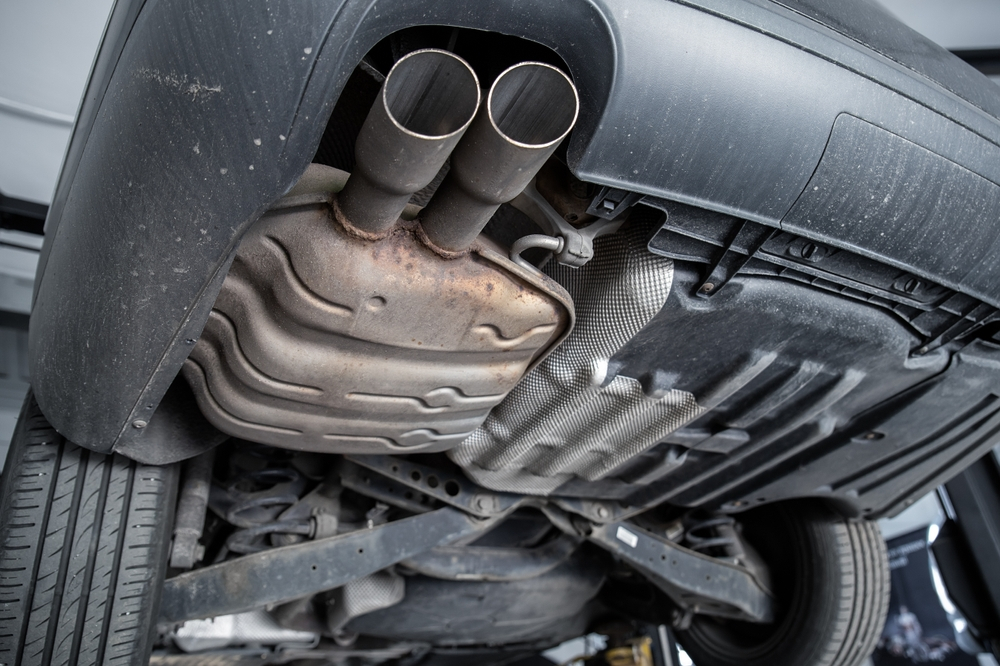What is the diesel particulate filter (DPF)
The diesel particulate filter was first developed in the 20th century, but it started being used extensively since 2009, when it became mandatory as part of the Euro 5 standard package. Still, some diesel-powered cars manufactured before this date can still have a diesel particulate filter.
DPFs have the role to capture and store exhaust soot in order to significantly reduce the CO2 emissions released by cars. DPFs, however, have a finite capacity, meaning that at some point, the soot has to be eliminated or burned, which usually happens during the regeneration process.
This is done by driving the vehicle at a specific speed and RPM levels, so that the engine is able to produce enough heat as to burn the excess soot. If it gets too clogged, the DPF filter might need professional cleaning or even replacing, which can be fairly expensive, depending on the car model.
Another important role of the diesel particulate filter, if the filter itself is healthy, of course, is to prevent the black trail of smoke diesel cars used to leave behind, especially during strong acceleration. As you would imagine, this means that the engine is technically being limited with regards to its potential power, but this is a sacrifice made for the health benefit of us all.
Removing the DPF is illegal and in some countries, it can lead to invalidating your car insurance, as well as a hefty 1,000 euros fine for cars and 2,500 euros fine for vans. At the same time, a diesel car without the DPF will automatically become a non-euro model.
Why does the DPF get clogged and how to regenerate
The main cause of blocked DPFs is driving the car at a low speed for short distances, which is why manufacturers recommend those who drive mostly in the city and on short distances to opt for an electric car or a gasoline-powered model at the very least. A well serviced DPF can last as much as 161.000 kilometers, although this depends on the carmaker and if the filter is original.

Using high quality engine oils contributes to a healthier DPF, as well as components in general, and driving with the fuel tank above half is recommended to ensure that regeneration can take place.
If the car's short on fuel, the system will halt regeneration to save on fuel. Speaking of regeneration, this is required when the specific indicator lights up and it usually happens after a diesel car has been driven at low speeds and for short distances a lot.
To regenerate, you will need to take your car on an express road or on the highway and drive at a moderately high speed, at least 65 km/h, while keeping the engine revved above 2.500 RPM. This process shouldn't take longer than 10 minutes and then, the indicator should go back to sleep.
The car will have additional symptoms when needing regeneration, such as the fact that the engine will sound differently and might not perform as usual, while increasing its idling speed, as well.
What is the gasoline particulate filter (GPF)
Gasoline particulate filters are a similar type of filtering system that is based on the diesel particulate filter and it was adapted to work on gasoline-powered cars. The GPF differs slightly from the DPF, as it can withstand higher temperatures, while being more resistant to thermal shocks, since gasoline-powered cars don't take as long to get warm and can run at higher temperatures.
GPFs were first introduced commercially by Mercedes-Benz on the S500 model in 2014, but the filter became mandatory only after the Euro 6d standard in 2018. Being a derived product from the DPF, the gasoline particulate filter does the same thing, works the same and is susceptible to the same issues, although they might not occur as quickly.
How to regenerate the gasoline particulate filter
To regenerate the gasoline particulate filter, if the engine will require an active regeneration, the car should generally be driven at a speed of over 80 km/h within an RPM range of 2.500 and 4.000 revolutions per minute, but this depends on the car brand, as well. The higher speed limit compared to diesels comes from the fact that gasoline-powered cars tend to have longer gears and at least the third gear is required for the regeneration to take place properly.

To prevent premature clogging, the same advice can be followed here, as in the case of the DPF. This is that the car should be drive at least occasionally at higher speeds on high-speed roads, to facilitate the burning of soot.
How to maintain healthy DPF and GPF systems
There are a few things you can do to make sure that your particulate filters stay in good shape for as long as possible. First and foremost, don't drive your car for short distances and at low speeds. If it's just a short drive that you would get in your car for, find an alternative, such as walking, biking, taking public transport or an Uber.
The second tip would be to drive your car for longer distances, at least once a week, even just for a leisure drive, so that the engine reaches its optimal temperature and starts burning the soot more efficiently. Using the right type of oil for your vehicle and having your particulate filter checked periodically can also help maintain it.
Ultimately, once your particulate filter will require a replacement, because this will happen at some point, get it replaced at an authorized service and with OEM parts or at least, high quality aftermarket ones. After all, the goal of these components is to help us breathe a cleaner air.
 Mihai - Cristian Ioniță
Mihai - Cristian Ioniță












Any thoughts?